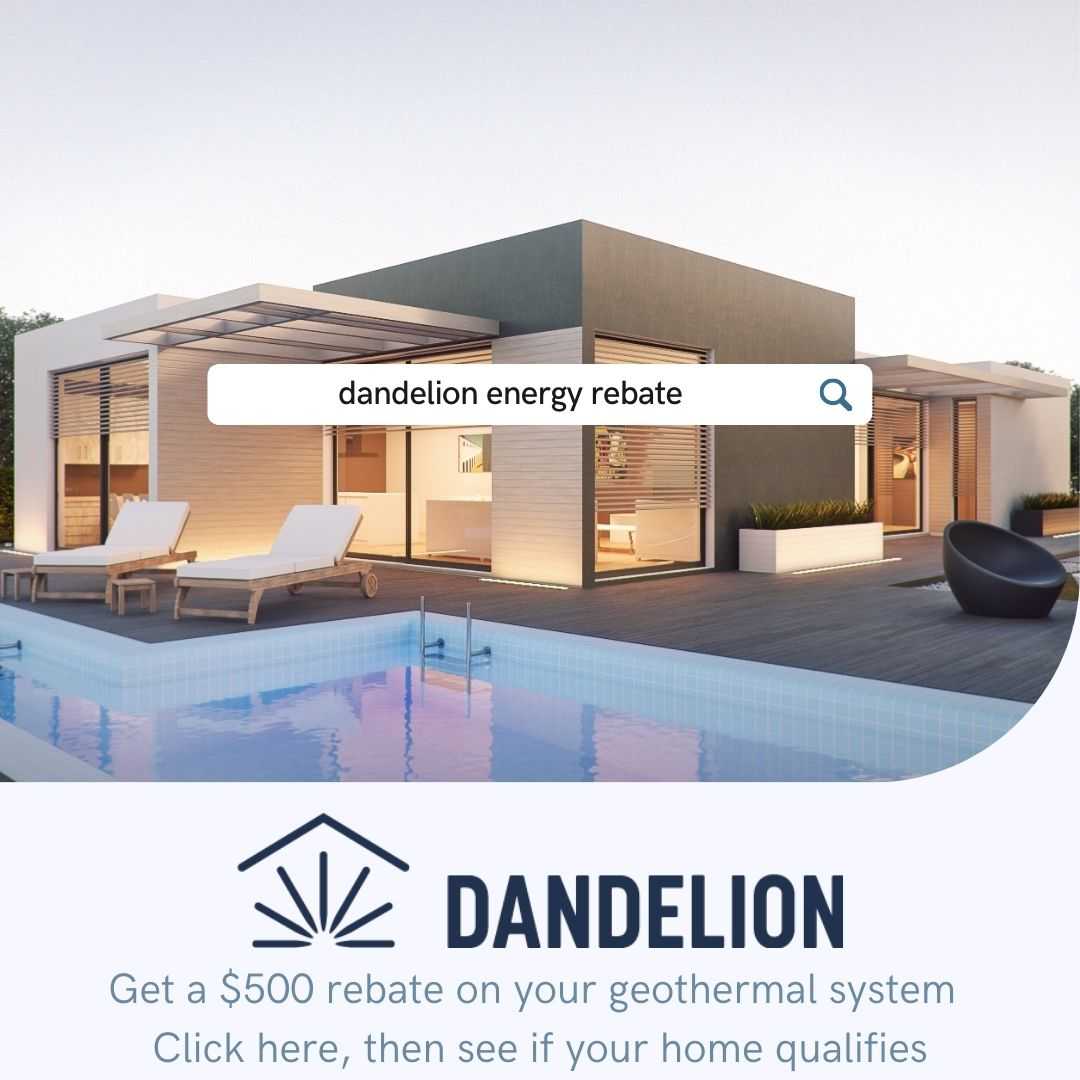A Real Homeowner's Geothermal Installation Experience
11 min read · Last updated November 28, 2021
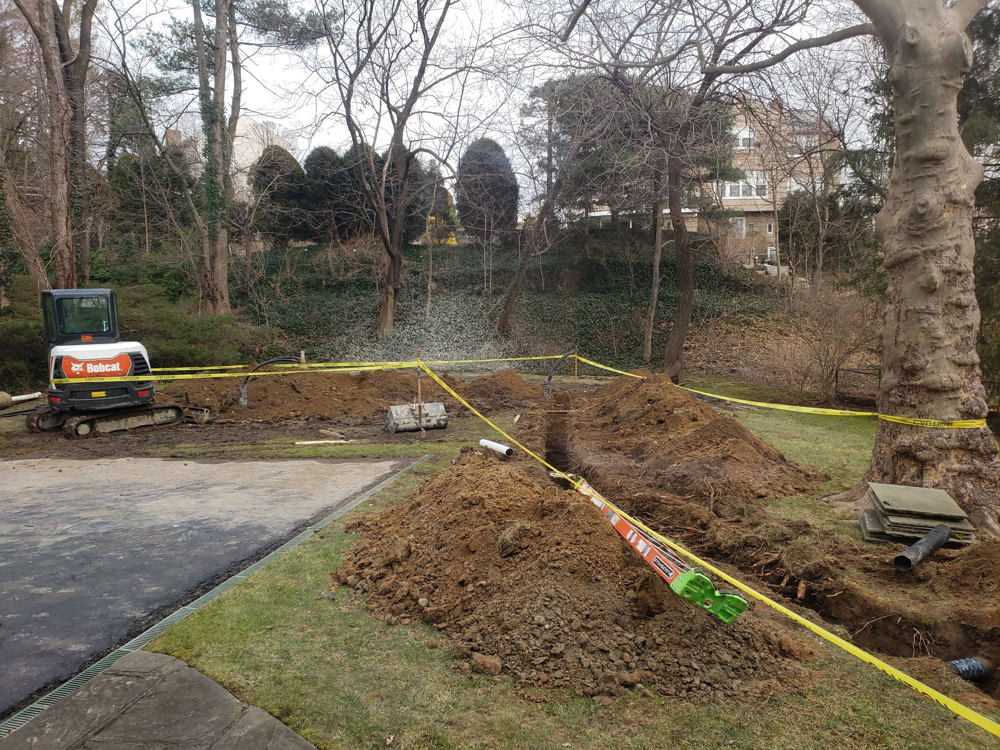
When I was looking into getting a geothermal heating and cooling system, I tried to find information about what the geothermal installation experience would be like. I really wanted to find an actual homeowner's experience for either a horizontal or vertical system. I never did, so I decided to share my experience for anyone considering a geothermal system.
This article covers the actual installation experience. We have other articles about each aspect of our experience.
Related Articles
This post is NOT sponsored by Dandelion Energy, but I will receive a commission if you get a geothermal system after clicking a link here. You will also receive a $500 rebate on your installation.
Article Contents
Our Geothermal System Details
We went with Dandelion Energy for our complete geothermal installation. They only install vertical loop systems using their own patented technology.
Our system includes a 5-ton geothermal heat pump for our 2,700 square foot home. Our existing furnace and water heater were natural gas, and we had an AC unit outside.
The ductwork in our home was mostly fine, but we did decide to have Dandelion perform a service called Aeroseal that helped improve the efficiency of the ducts.
To properly power our geothermal heat pump system, we upgraded our electrical panel from 100 amp to 200 amp. Dandelion took care of this for us as our geothermal contractor.
These two services did increase our initial costs, but I think both were necessary.
Geothermal site planning
We had 2 potential dig sites on our property. For comparison, we have just under half of an acre in a pretty standard suburban neighborhood. I was able to watch as the site planner marked spots for the 2 wells and planned where the trenches for the ground loops would go.
The drilling rig is so heavy that it can't pass too close to any multi-story foundations, so you have to have access to the well sites that doesn't require passing too close to your house. The rig is also tall, so overhead obstructions need to be considered.
The final site was ultimately chosen for its proximity to the ground source heat pump. The wells can only be 150 feet from where the heat pump will be installed. I assume that anything longer might impact the temperature of the liquid in the loops before it gets to the heat pump.
One of the big advantages of Dandelion Energy is that their method for geothermal installation only uses vertical loops, which doesn't require as much open space for installation.
Ground loop well drilling
Before a geothermal heat pump can be installed, the wells and trenches for the ground loop system have to be completed. For our system, they drilled two vertical boreholes approximately 400 feet deep. The two boreholes are about 20 feet apart.
Scheduling and expectations
Our geothermal heating system installation surprisingly happened earlier than originally scheduled. During our initial conversations with Dandelion, they told us that installation would probably happen in early spring. We were very surprised when they contacted us at the end of December to let us know the drilling team would be out in early January!
We were given about a week of notice that the drill team would be mobilizing to our home. They let us know right off the bat that last-minute changes can occur given the nature of the work.
Our installer always communicated very well, and this process was no exception. Our scheduling email included an overview of expectations for drilling:
What should you expect?
- A drill rig and several other pieces of equipment required for geothermal ground loop installation will be brought onto your property. This equipment will remain on site until drilling is complete.
- The crew will drill boreholes at the pre-approved location to install your geothermal ground loops.
- This work is relatively loud during working hours.
- We try to make use of as much daylight as possible to minimize the number of drilling days on each project and typically work from 7:00am to 6:00pm.
- After drilling is complete, the drill location and any place the drill rig traveled on your property may look unfinished, with excavated material left behind.
- The property will be brought to rough grade following the excavation work in phase 2, meaning your yard will be leveled for drainage but will still require additional work like topsoil and seeding to be brought back to its original condition.
- The material dug up during drilling may be used to fill in the trench that connects the ground loops to your home, and any excess material will be removed from your property within a few days after exterior work is completed.
- You may see some material consisting of rock, soil, and water generated during drilling that has a sludgy consistency. Disturbed areas can be covered with topsoil to allow grass to regrow.
They also reminded us of any exterior work that needed to happen prior to digging; for us, that just meant moving a playset that was sitting right where the boreholes would be drilled.
Drill team arrival
The night before the team was set to arrive, we were notified that they would be one day late. They arrived at 9am the following day. Our kids found it fascinating to watch all the big machinery move into our yard.

Geothermal well drilling equipment
All things considered, there really wasn't that much equipment on site, but everything involved is big. They brought:
- a large drill rig truck--the red Allied truck in the photos.
- a pickup with a flat-bed trailer
- a second flatbed with a big tank on it (I'm guessing water)
- a smaller trailer with additional equipment
Drill rig set up
Most of the equipment was pulled into our yard right next to the big drill rig. The rig itself is so heavy that it can't be driven within 15 feet of a home's foundation, so if you are considering a geothermal heat pump, there needs to be an accessible spot on your property for the rig. Dandelion did look at our side yard, but ultimately chose the back yard due to the proximity of the heat pump.
The team marked off where both holes would be and set up canvas fences. The whole set up took a little over 2 hours.
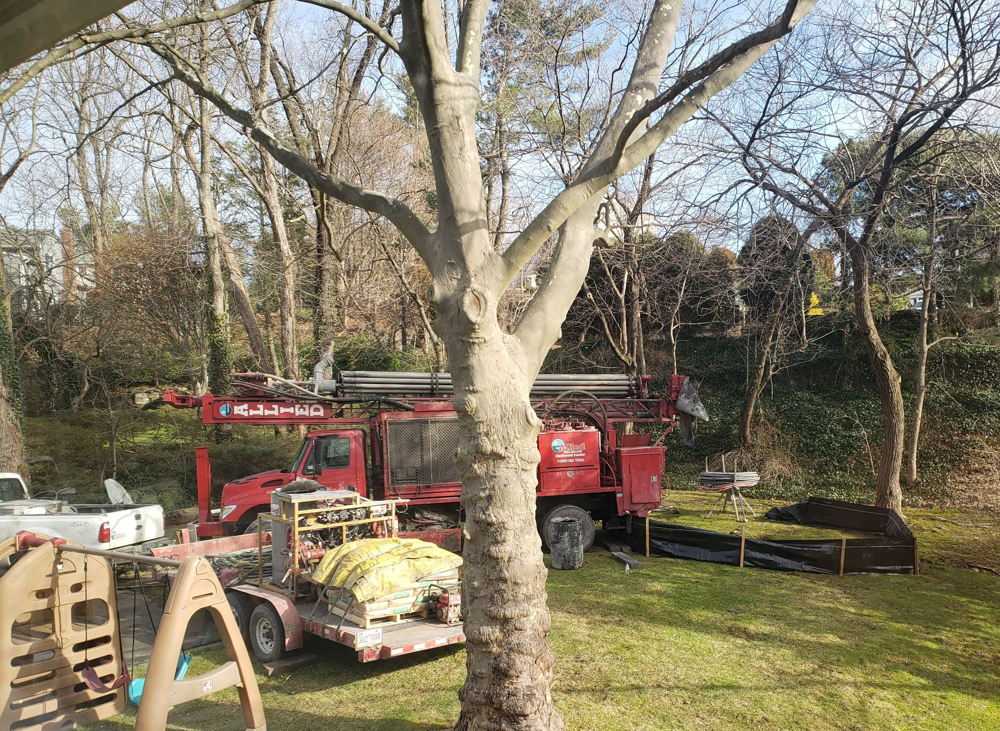
Drilling the wells for the ground loop
The drill rig was moved into place and stabilized before lifting up to drilling position. The noise wasn't as bad as I expected; it was kind of like loud white noise. It was definitely audible from everywhere in the house, but not atrocious. Thankfully I had warned my neighbors in advance.
The rig lifts up the big boom and then the drilling starts. It's pretty cool to watch the arm move up and down, grabbing more pipe as it goes. You can see that sometimes the drill goes down really fast and then they hit a harder spot and it slows way down.
There was some spray as they drilled; I assume it was from what was coming out of the holes. There were no large piles of earth, but there was some grayish dust covering the yard.
The team continued drilling for the rest of the day; they left around 6pm. Most of the equipment stayed in our yard overnight.
The second day they finished drilling both holes and got all the tubing run. The tubes stuck up a few feet into the air.
The aftermath of well drilling
The canvas fences were left in place. There was gray dust everywhere. Basically, the yard was trashed.
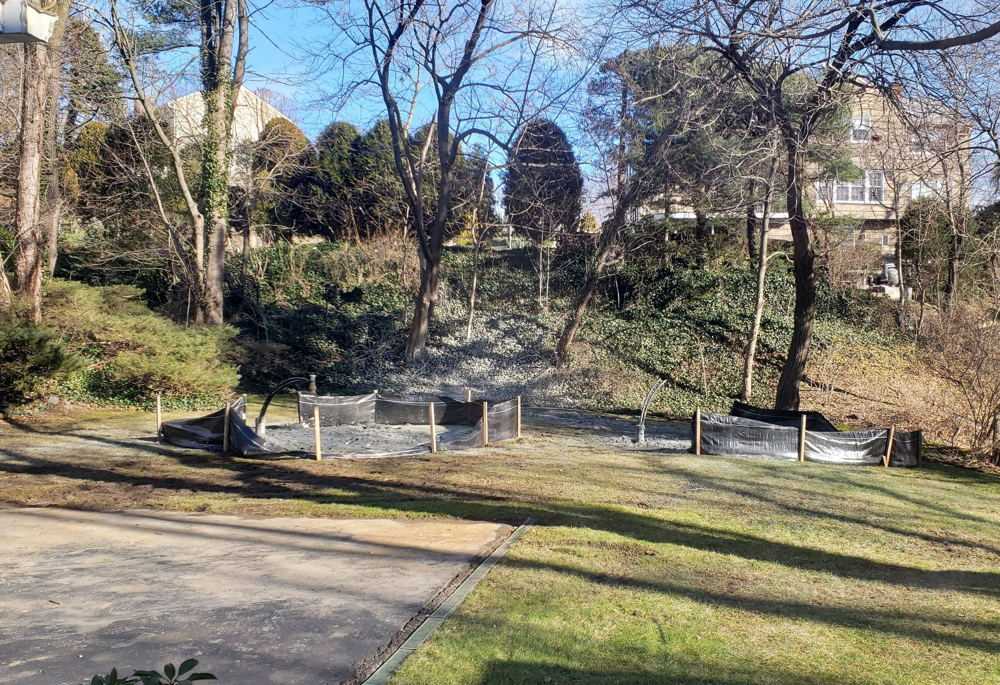
Overall drilling experience
Despite our yard being a mess, the whole process was pretty unobtrusive; no kids' naps were disturbed and my husband was able to work from home with no problem. I think our installer did a good job preparing us for what would happen. If anything, I think they overstated the impact just to ensure our expectations were in line with the outcome.
Trenching for geothermal ground loop
Geothermal trenches are, well, trenches that are about 4 feet deep and a few feet wide. They connect the boreholes to your home so that the ground loop can be connected to the geothermal heat pump. The trenches have to be 150 feet or less.
Scheduling and Expectations
On the second day of well drilling, I received the scheduling email for the trenching. Drilling finished on a Thursday, and the trenching team was set to arrive the following Monday. Our account manager let us know right away that there might be a delay of a day or two. We didn't hear anything else until the next Wednesday when we were notified the crew would arrive the next day.
Just like before, we were given a detailed list of project expectations:
What should you expect?
- An excavator will be brought onto your property and will be left on site until the exterior work is complete.
- A pickup truck and a trailer will also be used to transport equipment.
- The crew lead will review and discuss the excavation path and tie-in location with you.
- The excavation path is a trench up to 4’ deep, which runs from the vertical loops that were installed in phase 1 up to your house.
- The tie-in connects the vertical loops to the home and, eventually, your heat pump.
- Once the ground loops are connected, the crew will refill the trench and remove any leftover material when the exterior work is complete.
- The property will be brought to rough grade, meaning your yard will be leveled for drainage but will still require additional work like topsoil and seeding to be brought back to its original condition.
- You can expect tire marks to remain where the excavator had to drive on your property.
Our account manager spoke with me about anything that might be in the ground between the wells and the house. They also had the utility companies come out and mark where the service lines were (none of which were anywhere near our project). We have a drain in the backyard that ties out to the street, but were unsure of its exact location. The account manager acknowledged that and said they would be careful looking for it and hand dig around it.
Trenching crew arrival
The team showed up around 9am the next day. The drill team never needed access to the house, but the trenching team did as they needed to bring the piping into the basement. One of the crew came in to find the best spot to drill through the foundation to connect the closed loop system to the geothermal heat pump.
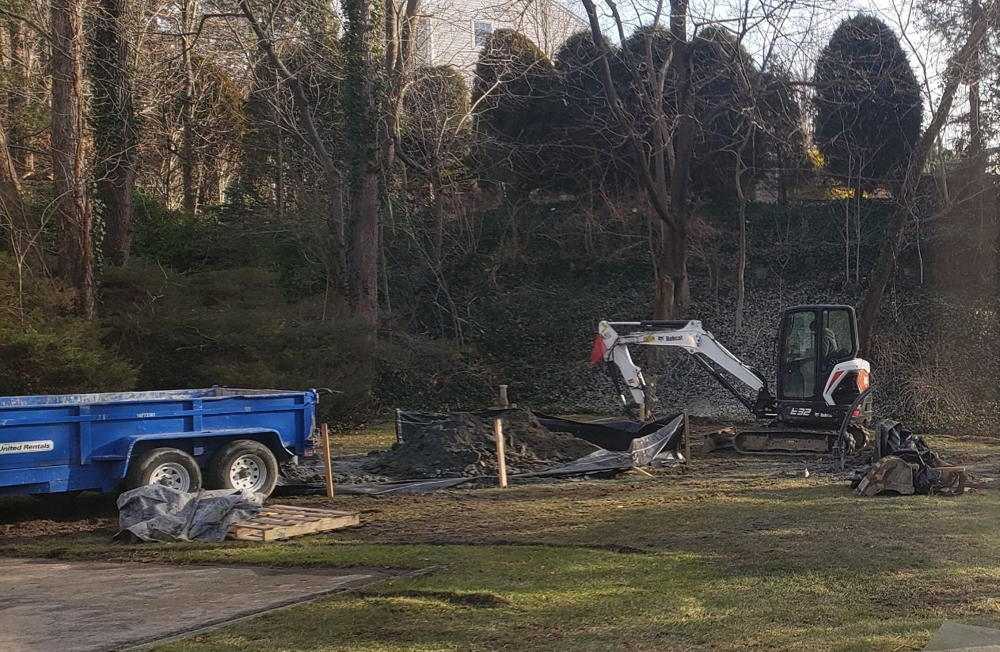
Equipment for geothermal trenching
This crew had a trailer to haul away the excess debris and materials left over from drilling. They also had an excavator which came on a flatbed trailer. The trailer was left parked in the street in front of the house.
Trenching crew set up
After identifying the best spot to bring the pipes into the basement, one of the crew members started to dig next to the foundation in that spot while the rest of the crew cleared the path to the wells and cleaned up the leftover materials from the drillers.
We had a stone path running across where the trench would be; the crew moved the stones that would be in the way into a pile nearby.
Two holes were drilled into the foundation to allow the pipes for the closed loop system to be connected to the geothermal heat pump.
Trenching to connect the geothermal ground loops to the house
The excavator started to dig the trench from the house out to the wells. The trench is 4 feet deep and a couple feet wide.
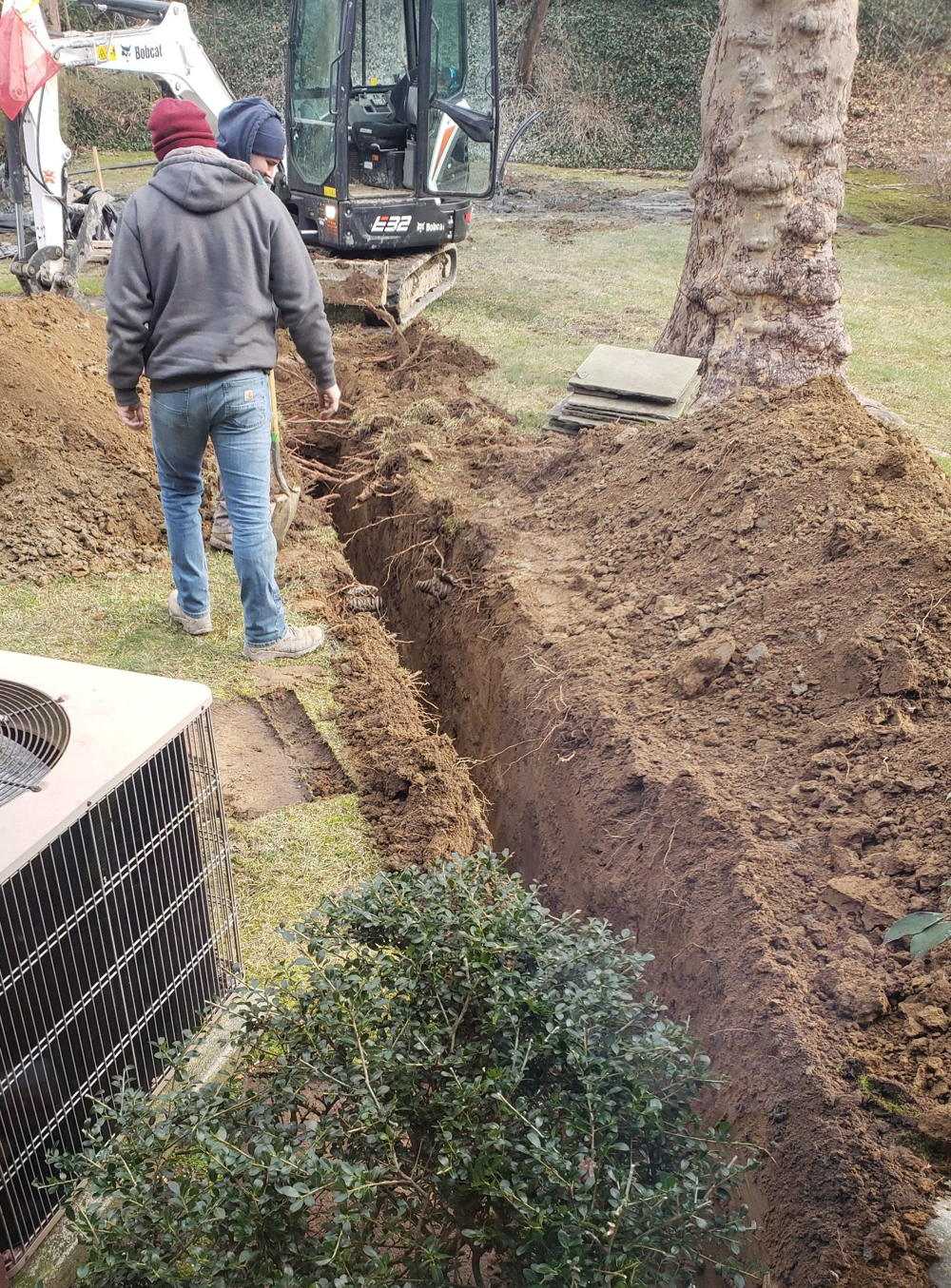
Although our account manager assured us the team would try to hand dig around any obstacles, they went right through 2 pipes along the trench. One of them was the drain for our sump pump and the other was for a drain in the back yard.

The team was able to repair them pretty quickly, and we haven't noticed any issues.
The whole trench was completed on the first day. Our yard was definitely torn up; as I mentioned before, this was definitely the most disruptive part of the whole geothermal install. It doesn't help that one of the crew members called in sick the next day, so our yard was left like this for a few days, including all the tools strewn about and the large trailer in the street.

Normally, one crew member calling in sick wouldn't be so disruptive, but in these days of Covid-19, that means the whole crew weren't allowed to work. It took a few days to get the team back to the site to complete the piping. The trench was dug on a Thursday, and they came back to finish on the following Tuesday.
The pipes were connected from the wells to the house and then the trench was filled back in.

The pipes were brought in through the holes in the foundation and sealed.
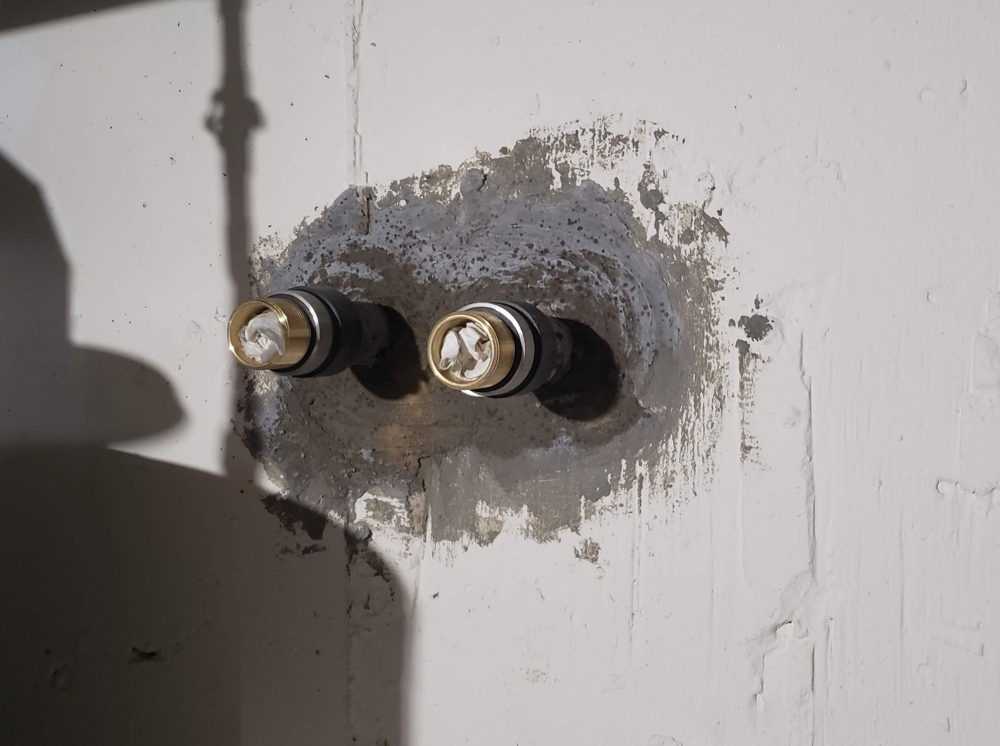
The aftermath of digging geothermal trenches
Our backyard is no more. We knew the yard would be completely dug up, but for some reason I didn't really think about the mud pit that would be left behind. There's not much we can do about it for now. We have plans with a landscaper to flatten and re-seed, but we can't do that until spring. Thankfully, the yard was covered in snow for a couple weeks, but we are going to be dealing with a lot of mud until it can get cleaned up.
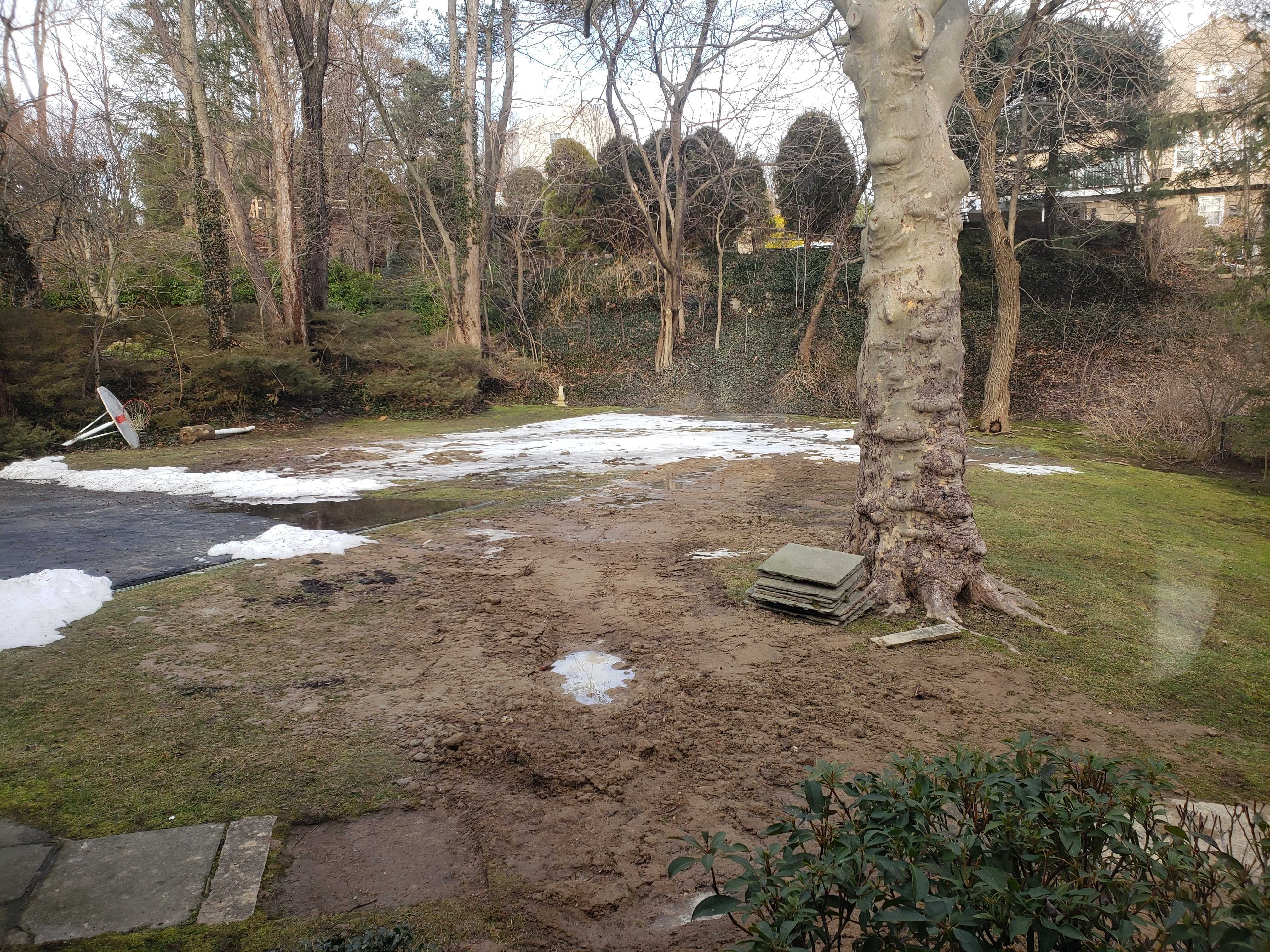
Overall trenching experience
This stage was definitely more invasive and had a few hiccups. Aside from a little radio silence on scheduling before the team showed up, our installer dealt with the issues along the way as well as could be expected. We were contacted by the team lead about the possible health concerns of a sick employee and the annoyance of the stalled project.
Geothermal Heat Pump Installation
Scheduling and Expectations
Our geothermal heat pump was installed about a week after the trenches were completed. Our account manager emailed me the project expectations:
What should you expect?
- Our installation crew will need access to the interior of your home, including the basement and possibly attic depending on the type of unit being installed.
- The crew will remove your existing furnace, air handlers, and/or condensers and connect your new heat pump to the duct work, electrical, and ground loops.
- After the unit is up and running, the crew will run tests to ensure the pump is operating at the expected standards.
Geothermal heat pump installation crew arrival
The crew to install the geothermal heat pump consisted of 4 to 5 people. Since they needed access to the house, the team lead met with me to figure out the easiest (and least invasive) path for the team to take in and out of the house. They also asked if they could work in our garage given the cold temperatures.
Heat pump installation equipment
Other than the geothermal heat pump and the desuperheater, no other large equipment was brought on site. The workers had a large truck that was parked in the driveway.
Heat pump installation crew set up
The workers laid out protective covering over the carpet they would be walking over. They also wore protective booties when walking in our home, which was nice.
They set up some tools in our garage, but I'm not sure exactly what was there.
Geothermal heat pump installation
This crew removed our existing furnace to make room for the new geothermal heat pump. The new heat pump was brought into place and connected to the ground loop system and the existing ductwork. New power lines were run for both the heat pump and the auxiliary heat.
The team installed the geothermal desuperheater next to our gas water heater and connected everything together.
After installing the new heat pump, they removed our outdoor air conditioning unit and installed a new ecobee thermostat.
Heat pump installation aftermath
There were a few quality issues with this team. Our stair handrail was damaged when the heat pump was brought down and there was a hole left open where the air conditioning was connected to the ductwork. There were also metal pieces and screws everywhere around where they worked.
In the end, we have a working geothermal heat pump and we are thrilled.

Overall geothermal installation experience
The process was mostly smooth. I never expect anything home-related to go perfectly, and this went about as expected.
My yard is more torn up that I thought it would be, but it really just needs to be seeded. If your installation happens during warmer months, you should be able to fix it faster so you don't have to look at frozen mud for months like I did.
Mostly I am excited to leverage sustainable energy to lower our energy bills and just to be more energy efficient in general.
I calculated our pay-off period for our geothermal system to be just under 10 years, which I am happy with.
FAQ
How long does it take to install a geothermal heating and cooling system?
Our geothermal heat pump system took about a month to be installed. The drilling, trenching, and heat pump installation phases took a few days each, and there were a few days in between each.
What does the average geothermal installation cost?
Home Advisor gives a range of $3,704 and $17,424 with an average of $10,455 to install geothermal heat pumps. Dandelion Energy lists their heat pump cost range as about $18,000 – $25,000 for a 3 – 5 ton heat pump system. I'm not sure whether Home Advisor includes incentives or not, but the Dandelion cost is definitely after incentives. Our total installation costs were right around $20,000 after incentives.
Does geothermal really save money?
We haven't had our geothermal heat pump for a full year yet, but so far it looks like we'll average about a $60 savings per month on our energy bills. Geothermal heat pumps have a longer usable life than both a conventional heating system and AC unit. They also require less maintenance.

